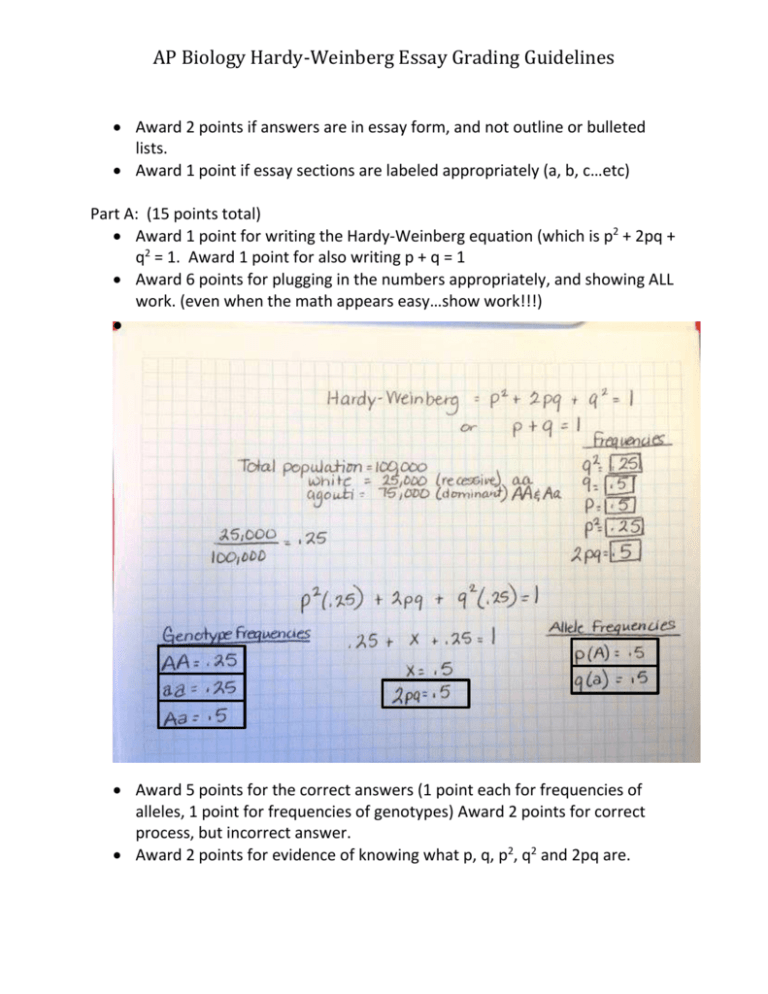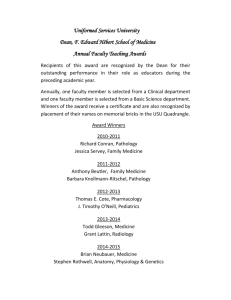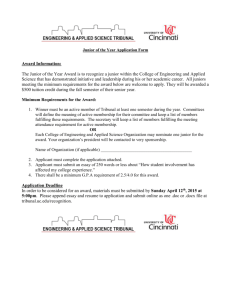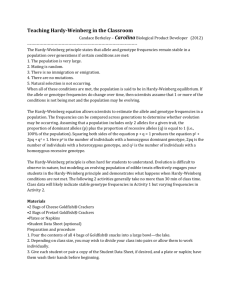AP Biology Hardy-Weinberg Essay Grading Guidelines
advertisement

AP Biology Hardy-Weinberg Essay Grading Guidelines Award 2 points if answers are in essay form, and not outline or bulleted lists. Award 1 point if essay sections are labeled appropriately (a, b, c…etc) Part A: (15 points total) Award 1 point for writing the Hardy-Weinberg equation (which is p2 + 2pq + q2 = 1. Award 1 point for also writing p + q = 1 Award 6 points for plugging in the numbers appropriately, and showing ALL work. (even when the math appears easy…show work!!!) Award 5 points for the correct answers (1 point each for frequencies of alleles, 1 point for frequencies of genotypes) Award 2 points for correct process, but incorrect answer. Award 2 points for evidence of knowing what p, q, p2, q2 and 2pq are. AP Biology Hardy-Weinberg Essay Grading Guidelines Part B: (12 points) Student will be awarded points for discussion of the following: (1 point per bullet, for a total of 6 Points for identifying what would happen, and 1 point per bullet for a total of 6 points for some discussion of why that would happen) Identification and description of the AA genotype being the ones affected, and dying. p2 frequency decreases (homozygous dominant) Aa frequency decreases (heterozygous) aa frequency increases (homozygous recessive) p decreases, but is not eliminated because of heterozygotes q increases Part C: (10 Points) Student will be awarded points for discussion of each of the following bullets (5 points per bullet, for a total of 10) definition of microevolution changing allelic frequencies = microevolution, no change in allelic frequencies = no evolution occurring example to show how it might happen (any that you can come up with…like the taste lab results) discussion of the Hardy-Weinberg equilibrium, and what it means The Hardy–Weinberg equilibrium is a theoretical state where allelic and genotypic frequencies in a population remain constant from one generation to the next, due to the absence of evolutionary influences. Because there are always evolutionary influences present in real populations, the Hardy– Weinberg equilibrium describes an ideal condition against which the evolutionary effects of these influences can be analyzed mathematically.







